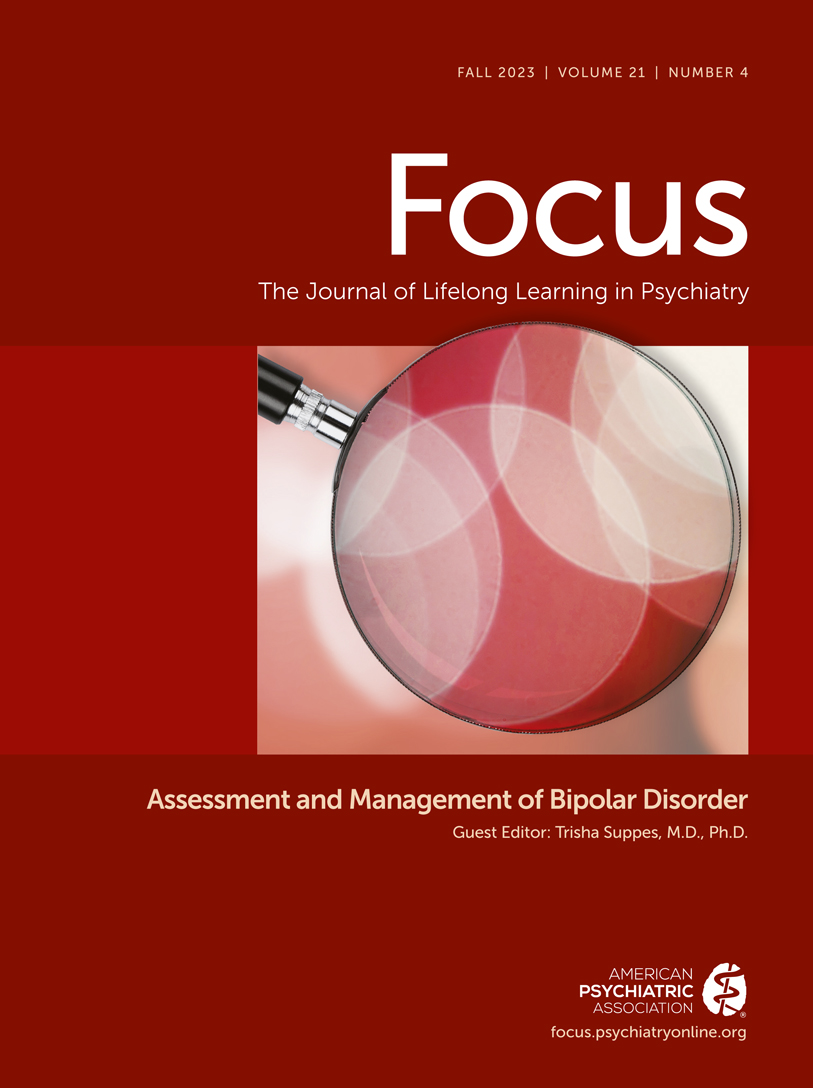Suicide Assessment and Prevention in Bipolar Disorder: How Current Evidence Can Inform Clinical Practice
Abstract
Bipolar disorder is associated with a considerable risk of suicide, and this fact must be incorporated into management of all patients with the condition. This article highlights the importance of a more nuanced understanding of the factors associated with the increased risk of suicidal behavior in people diagnosed as having bipolar disorder and interventions that could mitigate it. Several sociodemographic, clinical, environmental, and other variables have been associated with suicide attempts or deaths in bipolar disorder. Youths with bipolar disorder are a particularly vulnerable group, and their trajectory of illness could be modified by early interventions. Several medications have been studied regarding their relationship to suicide risk in bipolar disorder, and interventional psychiatry is a newer area of research focus. Finally, community-based approaches can be incorporated into a comprehensive approach to suicide prevention. This article summarizes the current understanding of key variables that can help inform a clinical risk assessment of individuals and interventions that can be employed in suicide prevention in bipolar disorder.
Access content
To read the fulltext, please use one of the options below to sign in or purchase access.- Personal login
- Institutional Login
- Sign in via OpenAthens
- Register for access
-
Please login/register if you wish to pair your device and check access availability.
Not a subscriber?
PsychiatryOnline subscription options offer access to the DSM-5 library, books, journals, CME, and patient resources. This all-in-one virtual library provides psychiatrists and mental health professionals with key resources for diagnosis, treatment, research, and professional development.
Need more help? PsychiatryOnline Customer Service may be reached by emailing [email protected] or by calling 800-368-5777 (in the U.S.) or 703-907-7322 (outside the U.S.).



